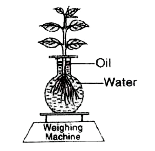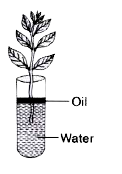Name the adaptations found in
aerial plants
Step-by-Step Solution
1. Understanding Aerial Plants:
- Aerial plants are those that primarily grow in the air or are adapted to live in windy conditions. They are often found in tropical and equatorial regions.
2. Thick Waxy or Leathery Leaves:
- Many aerial plants, such as epiphytic orchids, have thick, waxy, or leathery leaves. This adaptation helps reduce water loss due to evaporation.
3. Slender Leaves that Curl Up:
- Some aerial plants have slender leaves that curl up. This adaptation reduces the surface area exposed to the air, further minimizing water loss.
4. Swollen Leaves and Pseudobulbs:
- Certain aerial plants possess swollen leaves and structures called pseudobulbs. These adaptations allow the plants to store water, which is crucial for survival during dry periods.
5. Summary of Adaptations:
- The main adaptations found in aerial plants include:
- Thick, waxy, or leathery leaves to reduce water loss.
- Slender leaves that curl up to minimize surface area.
- Swollen leaves and pseudobulbs for water storage.
- Aerial plants are those that primarily grow in the air or are adapted to live in windy conditions. They are often found in tropical and equatorial regions.
- Many aerial plants, such as epiphytic orchids, have thick, waxy, or leathery leaves. This adaptation helps reduce water loss due to evaporation.
- Some aerial plants have slender leaves that curl up. This adaptation reduces the surface area exposed to the air, further minimizing water loss.
- Certain aerial plants possess swollen leaves and structures called pseudobulbs. These adaptations allow the plants to store water, which is crucial for survival during dry periods.
- The main adaptations found in aerial plants include:
- Thick, waxy, or leathery leaves to reduce water loss.
- Slender leaves that curl up to minimize surface area.
- Swollen leaves and pseudobulbs for water storage.
Topper's Solved these Questions
Similar Questions
Knowledge Check
All the following are the adaptations of land plants except :
Aprotection of the embryo from drying outBwaxy cuticle on leaves to prevent drying outCwaxy cuticle on roots to prevent drying outDvascular system in most plants) to move water internally
what are the adaptations found in a desert animal like camel?
View SolutionName the adaptations found in
trees found in mountain regions
View SolutionMention any three adaptations found in plants to favour the process of photosynthesis.
View SolutionMention three adaptations found in plants to reduce transpiration.
View SolutionThe diagram below represents a process in plants. The setup was placed in bright sunlight. Answer the following questions :

Mention any three adaptations found in plants to overcome this process?
View SolutionStudy the diagram given below and answer the questions that follow :

Mention any three adaptations found in plants to overcome the process studied in the experiment. .
View SolutionDescribe any two adaptations seen in desert plants.
View Solution
